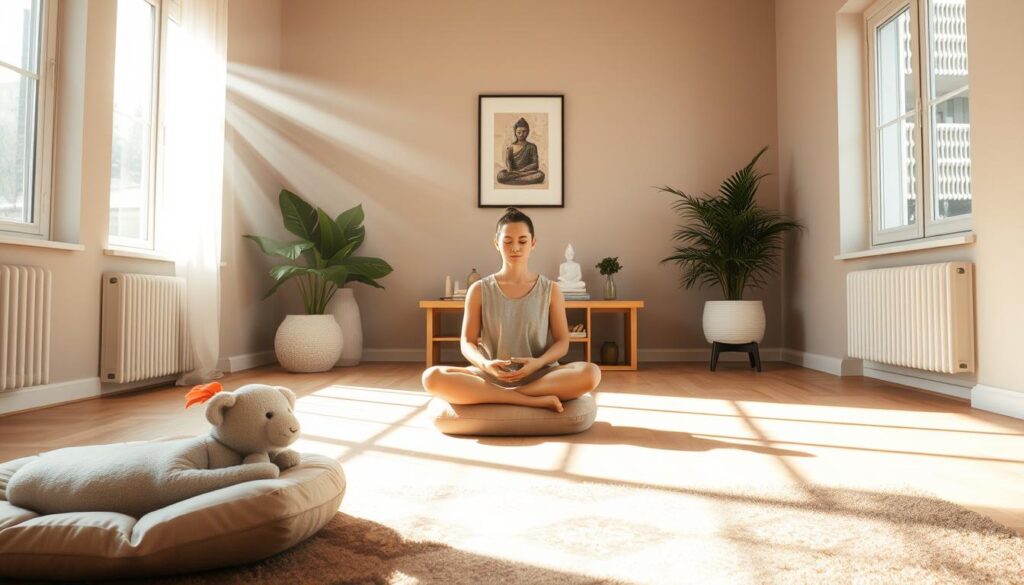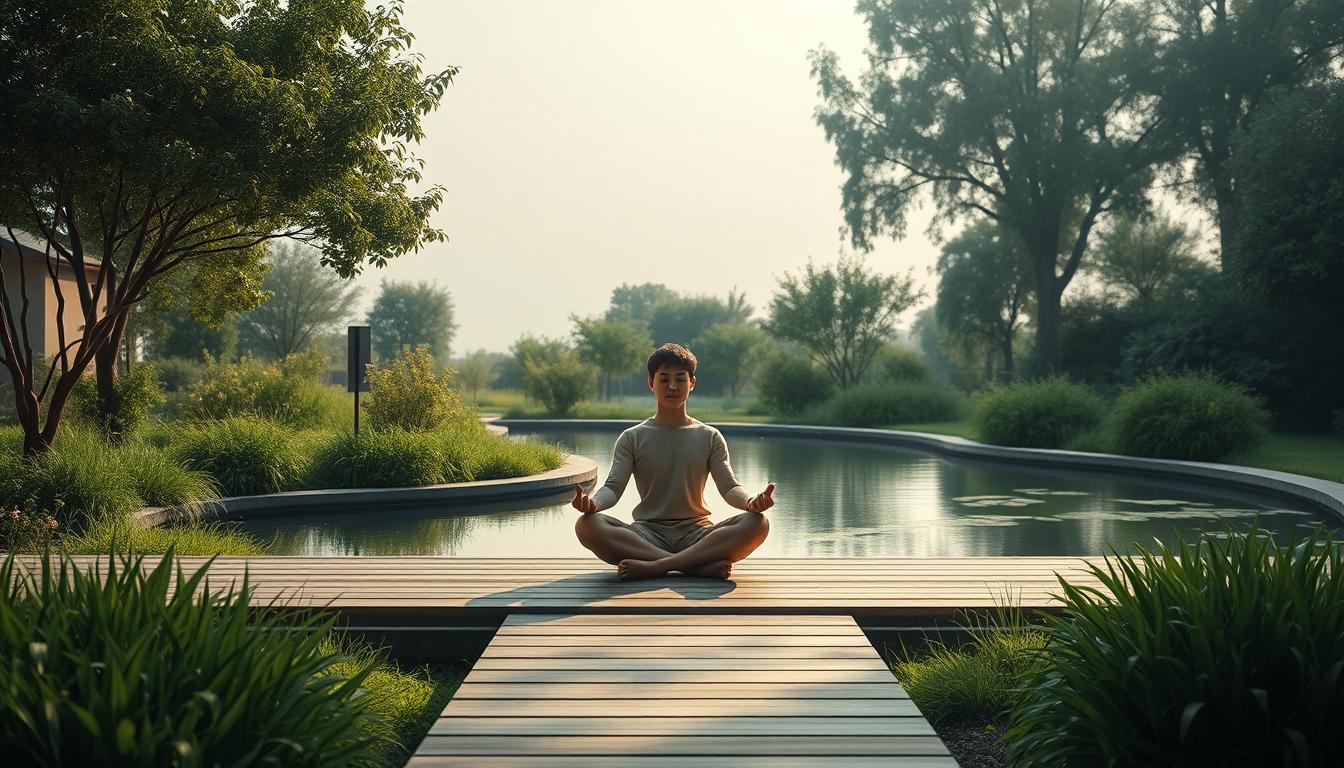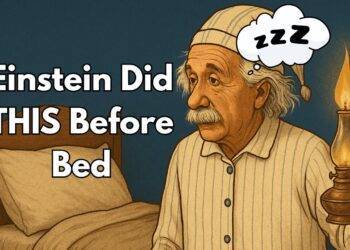“The little things? The little moments? They aren’t little.” – Jon Kabat-Zinn’s words capture the essence of mindfulness: purposeful, nonjudgmental focus on the present moment. At its core, this approach trains the mind to observe thoughts and sensations without reaction—a skill increasingly vital in today’s fast-paced world.
Research reveals how anchoring awareness to the breath reshapes neural pathways, reducing stress and sharpening attention. Studies from institutions like Harvard Medical School show measurable improvements in emotional resilience and cognitive function after just eight weeks of consistent effort. This isn’t mysticism—it’s science-backed self-care.
For those seeking clarity, unlock peace with mindfulness meditation through methods we’ll explore later. Whether managing daily pressures or pursuing personal growth, these techniques offer tools to thrive—not just survive.
Key Takeaways
- Reduces stress and anxiety by fostering nonjudgmental awareness
- Enhances focus and cognitive flexibility through intentional breathwork
- Triggers structural brain changes that improve emotional regulation
- Supports better sleep quality by calming mental chatter
- Requires only 20 minutes daily for noticeable results
- Combines ancient wisdom with modern neuroscience
Understanding Mindfulness and Meditation
To harness the full potential of mindful living, it’s essential to distinguish between its core components. While often used interchangeably, mindfulness and meditation operate as complementary tools—one a state of being, the other a skill-building exercise.

What Is Mindfulness?
Mindfulness is the innate capacity to engage fully with the present moment. Jon Kabat-Zinn, founder of mindfulness-based stress reduction (MBSR), describes it as “paying attention in a particular way: on purpose, in the present moment, and nonjudgmentally.” This means noticing sensations—like the warmth of sunlight or the rhythm of your breath—without labeling them as good or bad.
It’s not about emptying the mind but observing thoughts as temporary mental events. A 2021 UCLA study found that individuals who cultivate this skill show improved attention regulation and reduced emotional reactivity.
Exploring Meditation as a Mental Exercise
Meditation provides structured training to strengthen mindful awareness. Through techniques like breath focus or body scans, practitioners learn to gently redirect wandering thoughts. Neuroscientist Sara Lazar notes that even 10-15 minutes daily can enhance cognitive flexibility.
Unlike informal mindfulness, meditation often involves setting aside dedicated time. A quiet space minimizes distractions, allowing deeper exploration of mental patterns. Over time, this rewires neural pathways—boosting clarity and resilience.
| Aspect | Mindfulness | Meditation |
|---|---|---|
| Setting | Any environment | Quiet, dedicated space |
| Primary Focus | Present-moment awareness | Structured mental training |
| Time Commitment | Integrated throughout the day | Scheduled sessions (10-30 mins) |
Neuroscience confirms this—studies show increased gray matter density in brain regions linked to emotional control after consistent sessions. Whether you’re savoring a meal or sitting in stillness, both practices cultivate a sharper, calmer mind.
Key Benefits of Mindfulness & Meditation
Modern neuroscience confirms what ancient traditions long understood—intentional awareness exercises reshape how we experience life’s challenges. These methods don’t just provide temporary relief but create lasting shifts in cognitive patterns and biological responses.

Reducing Stress and Enhancing Focus
When stressful situations arise, awareness training creates a critical pause between stimulus and response. This gap allows the mind to choose constructive reactions rather than impulsive ones. Studies using fMRI scans show reduced amygdala activity—the brain’s alarm center—during mindful breathing exercises.
Enhanced concentration emerges as a natural byproduct. A 2022 Johns Hopkins review found that structured meditation improves working memory capacity by 14% within six weeks. Participants reported better task prioritization and fewer distractions during complex projects.
Improving Overall Mental and Physical Health
The ripple effects extend beyond cognitive gains. Regular sessions lower systolic blood pressure by an average of 4.5 mmHg, according to American Heart Association data. Immune cell production increases by 23% in those maintaining consistent routines.
Brain imaging reveals another advantage: thickened prefrontal cortex regions linked to emotional regulation. This structural change correlates with reduced anxiety symptoms and improved sleep quality. As stress hormones decrease, the body enters repair mode more frequently.
Those exploring the full benefits of mindfulness meditation often discover unexpected improvements—from sharper problem-solving skills to increased resilience during life transitions. The science is clear: small daily investments yield compounding returns for mental health and physical vitality.
Practice Mindfulness or Meditation
Establishing a daily routine for mental clarity begins with simple, intentional steps. Sharon Salzberg, renowned teacher, reminds us: “You don’t need to reinvent the wheel—just show up consistently.” This foundational approach turns fleeting efforts into transformative habits.

Getting Started with Daily Practice
Begin by selecting a clutter-free area—a corner desk or cushion works. Sit upright yet relaxed, hands resting comfortably. Focus on natural breath rhythms: air flowing through nostrils, chest rising gently.
Set a timer for five minutes initially. When thoughts drift—as they will—return attention to physical sensations without judgment. Neuroscientists confirm this redirection strengthens focus networks over time.
| Stage | Focus Area | Tips |
|---|---|---|
| Starting Out | Consistency | Use phone reminders for same-time sessions |
| Building Routine | Duration | Add 30 seconds weekly |
| Advanced Integration | Daily Life | Anchor awareness to routine tasks |
Gradually extend sessions as comfort grows. Research shows twelve minutes daily enhances cognitive control within weeks. Celebrate small wins—each intentional breath rebuilds neural pathways for calmer daily life.
Techniques and Strategies for Effective Meditation
Crafting an effective approach to mental clarity requires intentional design—both in environment and technique. By combining sensory awareness with structured methods, individuals can build routines that adapt to their unique needs while delivering measurable results.
Designing Your Sanctuary
Choose a quiet corner with minimal visual distractions. A dedicated cushion or chair helps signal the body to transition into focused states. Keep lighting soft—natural light or dim lamps work best. Many find success with eyes closed and palms resting upward, as this posture encourages openness.
Harnessing Physical Awareness
Begin sessions by observing the natural rhythm of breathing—cool air entering nostrils, warm air exiting. Progress to body scan techniques: systematically notice tingling in fingertips or pressure against seating surfaces. This grounds attention in the present, reducing mental chatter.
Digital Support Systems
Guided tools like Headspace’s 10-day fundamentals course provide scaffolding for newcomers. Apps offer structured sessions on focus or stress relief, combining voice guidance with ambient sounds. Pair these with movement-based practices like yoga to engage both mind and muscles.
Experiment with session lengths—even seven minutes daily creates momentum. As Jon Kabat-Zinn advises: “The best technique is the one you’ll actually use.” Whether through silent reflection or app-assisted journeys, consistency trumps perfection in reshaping cognitive patterns.
Integrating Mindfulness into Everyday Life
True transformation occurs when awareness extends beyond formal sessions into the rhythm of daily living. By anchoring attention to ordinary moments, individuals cultivate resilience that permeates work, relationships, and personal growth. This seamless integration turns mundane activities into opportunities for clarity.
Mindful Movement and Yoga Practices
Physical activities like yoga become powerful tools when paired with intentional focus. Notice the stretch of muscles during a downward dog or the balance shift in tree pose. These movements train the mind to observe sensations without judgment—a skill that transfers to stressful situations.
| Activity | Focus Area | Benefit |
|---|---|---|
| Yoga Flow | Breath synchronization | Enhances body awareness |
| Walking Meditation | Footstep rhythm | Grounds attention |
| Stretching Breaks | Muscle tension release | Reduces mental fatigue |
Applying Awareness to Routine Tasks
Washing dishes? Feel the water’s warmth and soap’s texture. Commuting? Notice engine hums and steering wheel grip. These micro-practices—lasting just two minutes—build neural pathways for sustained focus. Five science-backed techniques show how brief pauses reset cognitive overload.
Try the STOP method during emails: Stop, Take a breath, Observe screen glare, Proceed calmly. Over time, this habit lowers heart rate variability and sharpens decision-making. The key lies in consistent repetition—not perfection.
By weaving presence into daily patterns, people develop an internal compass for stress management. This approach doesn’t add tasks but transforms existing ones into anchors for clarity.
Exploring the Science Behind Mindfulness Practice
Cutting-edge neuroscience reveals how structured mental exercises reshape our cognitive architecture. Advanced imaging shows measurable changes in brain regions responsible for emotional control and focus—even after eight weeks of consistent effort. These findings validate what practitioners have sensed for millennia: intentional awareness rewires neural networks.
Neuroscience and Brain Remodeling
MRI scans demonstrate increased gray matter density in the hippocampus—the brain’s memory hub—among regular practitioners. Simultaneously, the amygdala, which triggers stress responses, shows reduced activity. This dual effect explains improved emotional regulation reported in clinical trials.
Neuroplasticity—the brain’s ability to reorganize itself—accelerates through techniques like the body scan. A 2023 UCLA study found this method strengthens connections between the prefrontal cortex and emotional centers. Participants showed 31% faster recovery from stressful stimuli compared to control groups.
| Brain Region | Observed Change | Functional Impact |
|---|---|---|
| Prefrontal Cortex | Thickened neural pathways | Enhanced decision-making |
| Default Mode Network | Reduced activity | Less mind-wandering |
| Insula | Increased activation | Sharper body awareness |
Reviewing Key Research Findings
A landmark Johns Hopkins analysis of 47 trials confirmed meditation reduces anxiety symptoms as effectively as medication. “The data consistently shows decreased cortisol levels and improved heart rate variability,” notes lead researcher Dr. Elizabeth Hoge.
Eight weeks of mindfulness-based stress reduction (MBSR) programs yield:
- 14% improvement in attention span
- 23% reduction in inflammatory markers
- 5.2 mmHg average blood pressure drop
These biological shifts create a ripple effect—better sleep, sharper focus, and increased resilience. For those seeking evidence-based strategies, structured programs offer a roadmap backed by decades of peer-reviewed research.
Conclusion
Transforming your mental landscape begins with simple, intentional choices—not grand gestures. Studies confirm that even five minutes daily spent sitting on the floor or a quiet chair can rewire stress responses. Over days, these small investments build resilience, sharpen focus, and nurture emotional balance.
Start where you are. Whether dedicating a brief amount of time to breath awareness or pausing mid-task to observe sensations, progress thrives on consistency. Research reveals measurable changes in the body—lower blood pressure, improved sleep—when efforts remain steady.
Approach this journey without judgment. Wandering thoughts? Normal. Missed sessions? Human. What matters is returning with curiosity. Reflect on growth with gratitude, celebrating each step toward mental clarity.
Ready for change? Begin today. Your future self—calmer, sharper, more grounded—will thank you.
FAQ
How does mindfulness differ from meditation?
Mindfulness is the practice of staying aware of the present moment—observing thoughts, sensations, and emotions without judgment. Meditation is a broader mental exercise that often uses focused attention or breathwork to train the mind. While mindfulness can be part of meditation, it’s also applicable to daily activities like eating or walking.
Can beginners really benefit from short sessions?
Absolutely. Research shows even 5–10 minutes daily can reduce stress and improve focus. Apps like Headspace or Calm offer starter programs to build consistency. The key is regularity, not duration, to rewire neural pathways over time.
What’s the best way to handle distractions during practice?
Distractions are normal. Acknowledge them without frustration, then gently return focus to your breath or body scan. Over time, this strengthens mental resilience. Techniques like labeling thoughts (“planning” or “remembering”) can create helpful distance.
How does yoga complement mindfulness?
Yoga combines mindful movement with breath awareness, grounding attention in physical sensations. Studies link it to reduced anxiety and improved emotional regulation. Flowing through poses like downward dog or warrior sequences builds body-mind connection.
Are there proven physical health benefits?
Yes. Regular practice lowers cortisol (stress hormone) levels, improves sleep quality, and may reduce blood pressure. A 2021 Johns Hopkins study found meditation as effective as antidepressants for some anxiety cases. It also enhances immune response by reducing chronic inflammation.
What if I dislike traditional seated meditation?
Try alternatives! Walking meditation, mindful journaling, or sensory exercises (like savoring coffee aromas) count. Apps like Insight Timer offer music-based sessions. The goal is cultivating awareness—not perfecting a specific posture.
How quickly can I expect results?
Most notice subtle shifts in stress management within 2–3 weeks. Structural brain changes—like increased gray matter in the prefrontal cortex—often appear after 8 weeks of daily practice. Consistency matters more than speed.
Can gratitude practices enhance mindfulness?
Yes. Reflecting on three daily positives rewires the brain’s negativity bias. Pairing gratitude lists with breath awareness deepens emotional balance. Over time, this builds a habit of noticing joy in ordinary moments.




























































